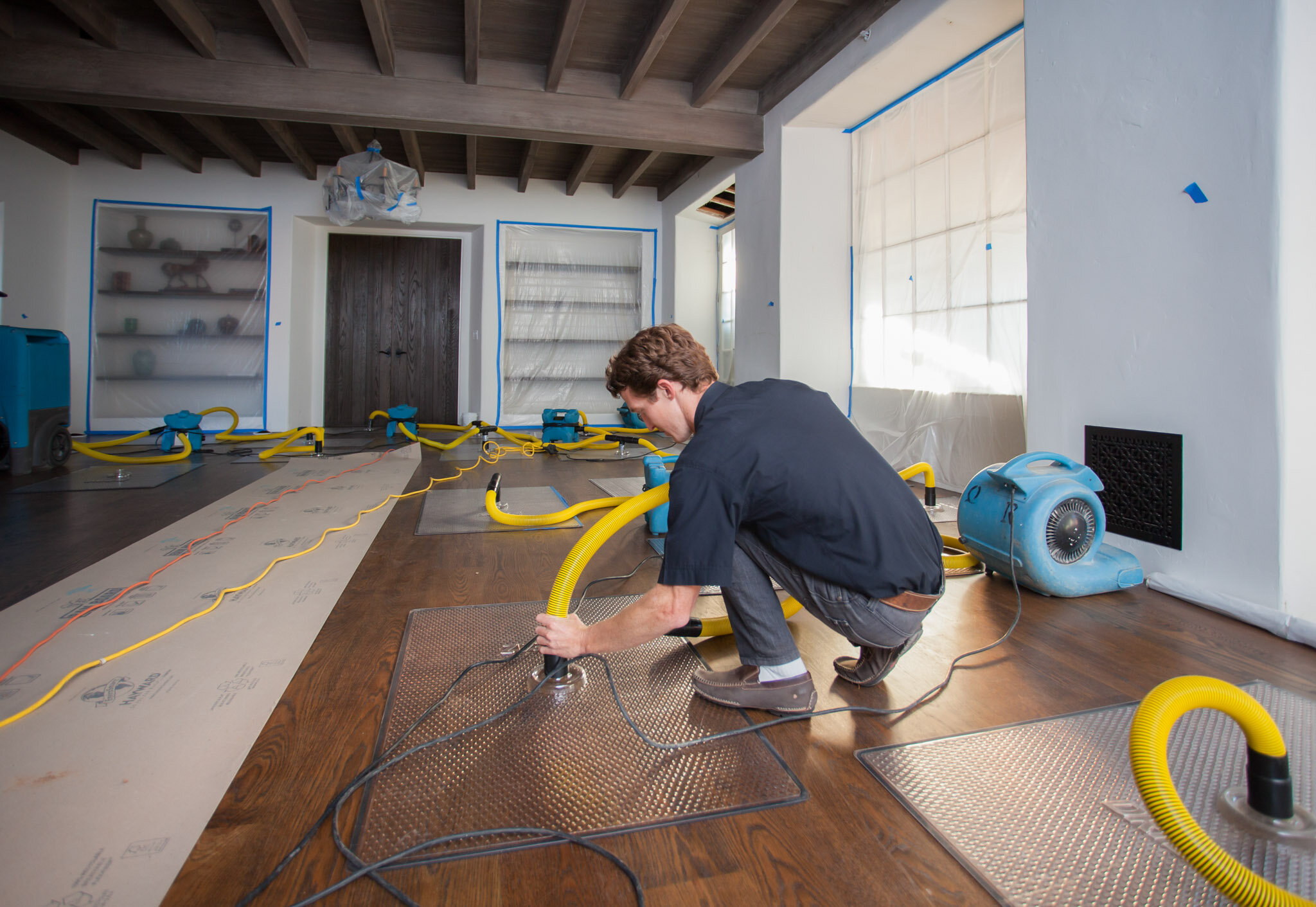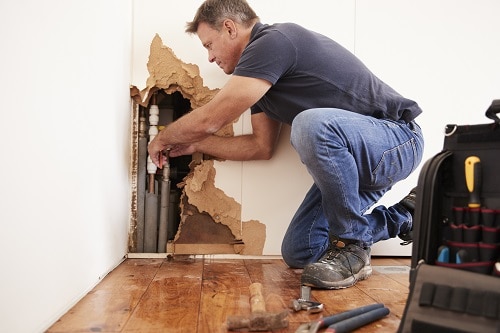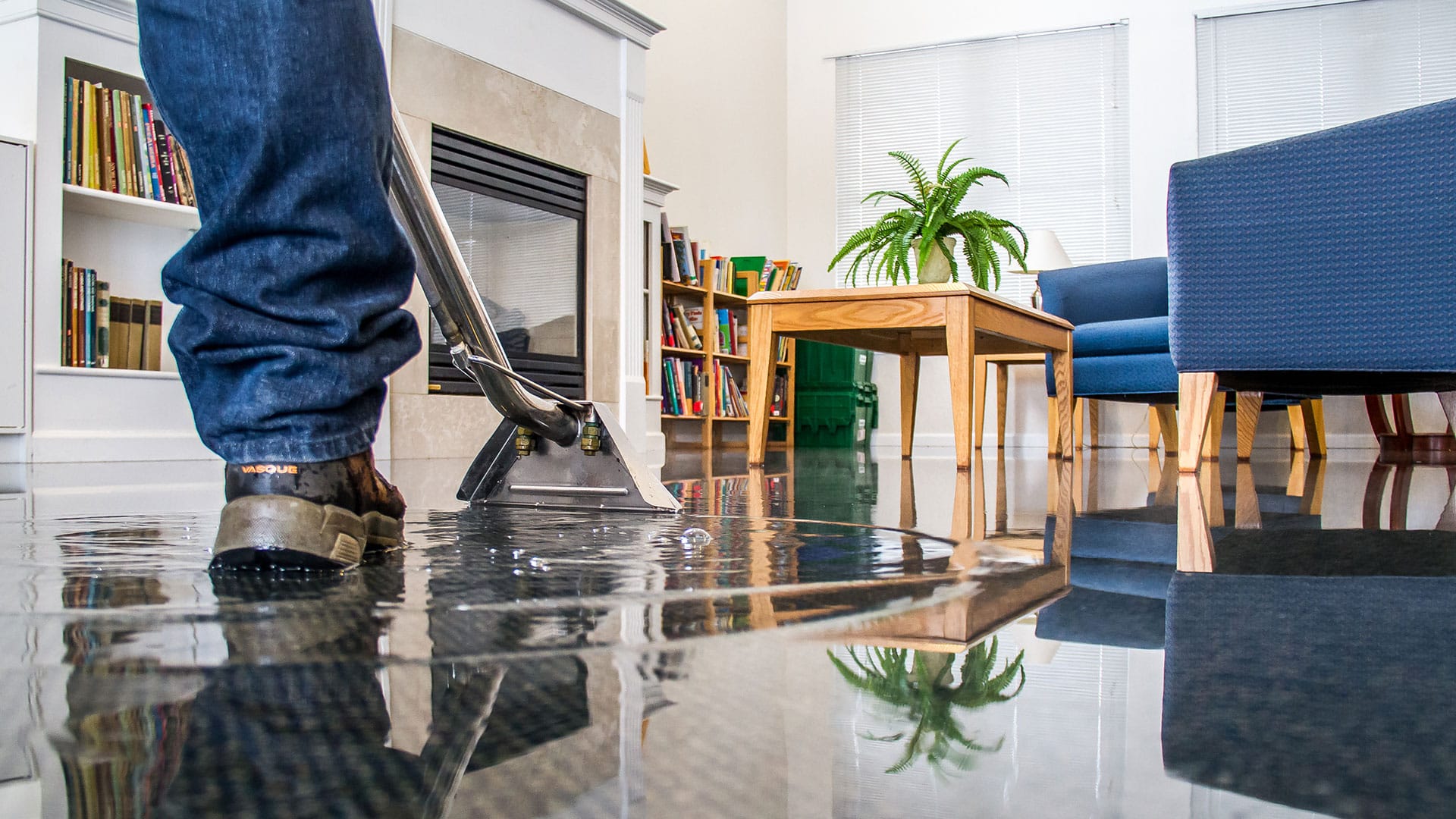Common mistakes to avoid when hiring Flood Cleanup Services
Water Damage Restoration 101: Understanding the Process and Expense
Water damage can strike unexpectedly, leaving home owners in a state of complication. Comprehending the reconstruction procedure is essential for reliable recovery. From reviewing the damage to picking the appropriate service supplier, each action affects the general result and price. Aspects such as the kind of water damage and seriousness additionally play a considerable duty. What are the details strategies used in repair, and just how can one get ready for possible costs?
Kinds Of Water Damage

Preliminary Analysis and Inspection

Water Removal Techniques
Complying with the initial assessment, reliable water removal techniques are used to minimize damage and stop further concerns. These methods involve the usage of customized devices such as industrial-grade vacuum cleaners and completely submersible pumps - Water Damage Restoration. The choice of technique depends on the volume of water existing and the kind of products affected. For standing water, completely submersible pumps are typically made use of for rapid removal, while vacuum cleaners are excellent for drawing out water from carpets and furniture. In addition, advanced techniques like water removal mats might be utilized for hard-to-reach areas - Flood Cleanup Services. The goal is to remove as much water as feasible, reducing the possibility for mold and mildew growth and structural damage. Prompt and effective water extraction is essential in the general water damage remediation procedure
Drying and Dehumidification Process
Once the water extraction is total, the drying and dehumidification procedure comes to be critical to bring back the damaged location. This phase commonly utilizes industrial-grade dehumidifiers and air moving companies to successfully reduce dampness levels. The dehumidifiers attract moist air, removing excess humidity, while air movers distribute air to speed up evaporation. Tracking devices is commonly made use of to track moisture and temperature degrees, making sure perfect drying out problems. The duration of this process can vary relying on the degree of the water damage and ecological factors. It is vital to completely completely dry all influenced products, consisting of walls, flooring, and furnishings, to prevent mold and mildew growth and structural damage. Appropriate implementation of this action is crucial for a successful restoration end result.
Cleaning and Sanitizing Damaged Locations
When the drying procedure is total, a detailed first evaluation and evaluation of affected areas is essential to recognize contamination degrees. Effective cleansing methods and proper items need to after that be employed to eliminate debris and stains. Sanitization and sanitation methods are essential to guarantee that damaging microorganisms are gotten rid of, bring back the space to a risk-free problem.
Preliminary Assessment and Examination
Prior to starting any kind of repair efforts, a complete preliminary evaluation and assessment of the impacted locations are crucial for efficient cleansing and sterilizing. This process involves determining the extent of water damage, establishing the source of the water intrusion, and reviewing the materials influenced. Examiners generally look for signs of mold and mildew growth, architectural stability concerns, and damaged items. The assessment also includes inspecting wetness degrees using specific equipment to ensure no surprise water pockets stay, as these can bring about further issues. Recording the findings is vital for intending the next action in the restoration procedure. An in-depth first analysis allows remediation experts to design a targeted technique for reliable cleansing and sanitizing, ultimately lessening damage and wellness risks.
Cleaning Up Methods and Products
Effective cleaning and sanitizing of water-damaged areas require a selection of products and techniques tailored to the details products impacted. For porous surface areas like drywall and carpets, extraction approaches are important to remove excess wetness, adhered to by deep cleansing with specialized cleaning agents. Non-porous materials such as tile or steel can be cleaned using commercial-grade cleansers that effectively remove contaminants. Vapor cleaning is one more effective method, particularly for rugs and upholstery, as it uses heats to remove bacteria and mold (Water Damage Restoration). In addition, environmentally friendly items are progressively prominent for their security and efficiency - Mold Remediation After Water Damage. Eventually, picking the appropriate cleansing methods and products not only assures prompt cleanliness but likewise aids in stopping further damage and carcinogen connected with water breach
Sanitization and Disinfection Approaches
When addressing water damage, correct sanitization and disinfection techniques are necessary to assure the security and health of the afflicted setting. After first cleaning, surface areas must be treated with proper disinfectants to remove pathogens, mold, and bacteria that flourish in damp problems. Typical approaches include making use of EPA-approved chemical anti-bacterials, which can be used via spraying or wiping methods. Additionally, ultraviolet (UV) light systems can properly sanitize areas by neutralizing microorganisms without severe chemicals. The choice of method usually depends upon the kind of products affected and the degree of contamination. Inevitably, complete sanitization not only brings back a secure space but additionally aids stop future health and wellness risks related to lingering dampness and mold and mildew growth.

Repairs and Restoration Options
Reviewing click the damage triggered by water exposure is essential for figuring out the appropriate repair services and repair choices. Home owners may deal with numerous problems, including harmed drywall, deformed flooring, and compromised structural aspects. Relying on the extent of the damage, fixings might involve changing sections of drywall, mounting new floor covering, or reinforcing structural beams. In cases of serious damage, complete replacement of affected products may be essential. Furthermore, specialist restorers frequently recommend making use of wetness meters to examine concealed dampness levels prior to making a decision on the ideal training course of action. It is essential to act promptly to stop mold growth and further deterioration. Picking the best options not only restores the home yet also assures lasting security and functionality.
Factors Affecting Restoration Prices

The extent of water damage straight influences the remediation costs property owners can anticipate to incur. Aspects such as the resource of the water, the duration of direct exposure, and the affected products considerably affect rates. Clean water damage from a busted pipeline is usually less expensive to bring back contrasted to damage caused by sewer. Additionally, the level of contamination dictates the requirement for specialized cleaning and disposal solutions, better enhancing expenditures. Geographical area likewise contributes, as local labor rates and schedule of restoration services can vary. The necessity of the response affects costs; quicker interventions normally lead to lower overall expenditures by protecting against additional damage. Comprehending these factors is essential for house owners when estimating remediation prices.
The 3 key types of water damage are categorized based on contamination degrees: clean water, grey water, and black water. A comprehensive first assessment and inspection are vital steps in the water damage remediation process. For standing water, submersible pumps are commonly made use of for quick removal, while vacuums are excellent for extracting water from rugs and upholstery. The degree of water damage directly impacts the reconstruction costs house owners can anticipate to sustain. Tidy water damage from a busted pipeline is usually much less costly to restore compared to damage triggered by sewage.